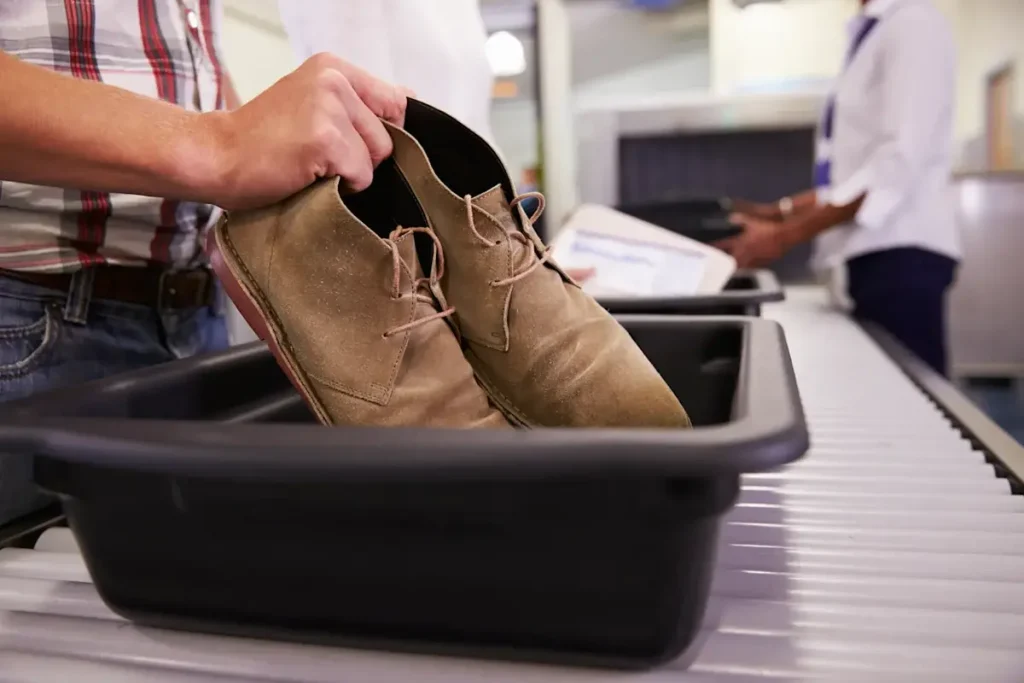The Transportation Security Administration (TSA) has officially announced the end of its nearly two-decade-old shoes airport security rule, allowing travelers to keep their shoes on during standard screening at many U.S. airports. The policy, instituted after the 2001 “shoe bomber” incident, is being phased out nationwide in a major security and efficiency overhaul.
A Long-Standing TSA Rule Finally Reversed
Since 2006, all passengers—regardless of airline or boarding class—were required to remove their shoes to pass through X-ray machines. While TSA PreCheck members and certain age groups (under 12 and over 75) were exempt, the change now lets all flyers keep footwear on during regular security processes, provided they present a Real ID and avoid secondary screening.
An internal memo, reported by ABC News and confirmed by CBS News, highlights that this TSA shoes-off policy will be phased in starting July 7, with many major airports already implementing it. Airports like LAX, LaGuardia, Baltimore/Washington, Fort Lauderdale, Cincinnati, Portland, Philadelphia, and Greensboro are participating in the rollout today.
What’s Driving The Change?
The TSA credits significant improvements in screening technology as the catalyst. Advanced X-ray systems can now detect shoe-borne threats without requiring removal, making the old 2001-era mandate redundant.
A former TSA officer, Caleb Harmon-Marshall, emphasized that modern scanners eliminate the need to disassemble footwear. Transportation Secretary Sean Duffy also acknowledged the shift comes in response to traveler feedback—“TSA is the #1 travel complaint”—and is aimed at improving speed and comfort.
Who Is Still Required to Remove Shoes?
There are a few exceptions:
-
Passengers without a Real ID may still need to remove their shoes during secondary inspection.
-
Anyone flagged by the system for additional scrutiny will also be required to comply with shoe removal.
In these cases, the flexibility granted by PreCheck or Real ID does not apply.
Frequent flyers and travel influencers have greeted the news with enthusiasm. Many noted that wearing shoes through security is more hygienic and much faster—especially during peak hours.
One Mile at a Time, a travel blog, reported on the change in detail, noting that wait times could be halved and the need for cumbersome shoe-wrangling eliminated for millions of travelers.
Airport Security Protocols
This shift represents one of the most notable security relaxations since TSA’s inception. The removal of the shoes-off requirement aligns with growing calls to modernize cumbersome airport procedures—prompted by cost concerns and long passenger wait times.
However, other longstanding regulations, such as the 3-1-1 liquids rule and electronics removal, remain in place. While the liquids restriction could potentially follow toward phase-out, current projections suggest it wouldn’t be rescinded nationwide until around 2040.
What Travelers Should Know Next
-
Nationwide roll-out: Expect to keep your shoes on at most major airports starting now—verify with your departure airport.
-
Keep Real ID handy: This document ensures you remain exempt from shoe removal unless flagged for extra checks.
-
Prepare for secondary checks: Be aware that metal detectors or alerts may still warrant your shoes’ removal.
-
Plan footwear strategically: Slip-ons or tennis shoes remain best for smooth passage—those with metal parts may still trigger alarms and delays.
Ahead lies a future of smoother, faster screenings. As TSA continues innovating and adapting to traveler needs, further changes—like streamlined liquids screening or contactless document checks—are likely. Today’s shoes-off policy change marks a turning point toward convenience without compromising safety.
The end of the TSA shoes-off policy marks a significant moment in post-9/11 aviation history, transforming routine passenger experiences at security checkpoints. By keeping footwear on, travelers can now enjoy more efficient, comfortable, and hygienic screening procedures, setting a new standard for airport travel in the digital age.


